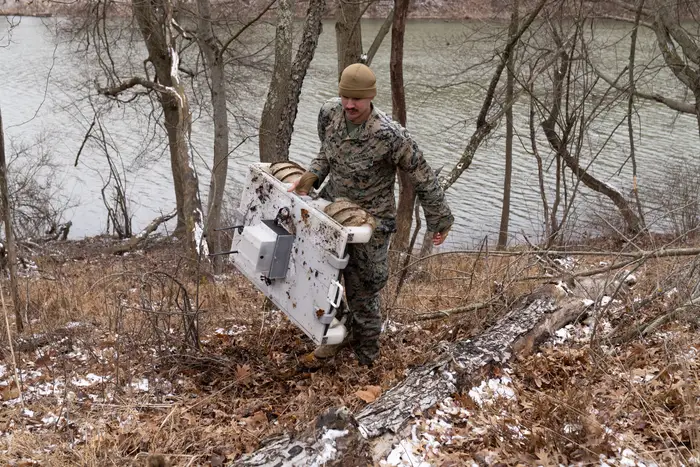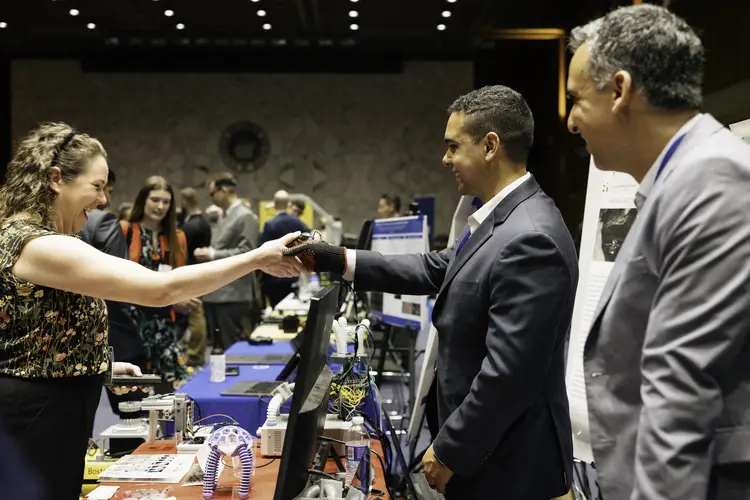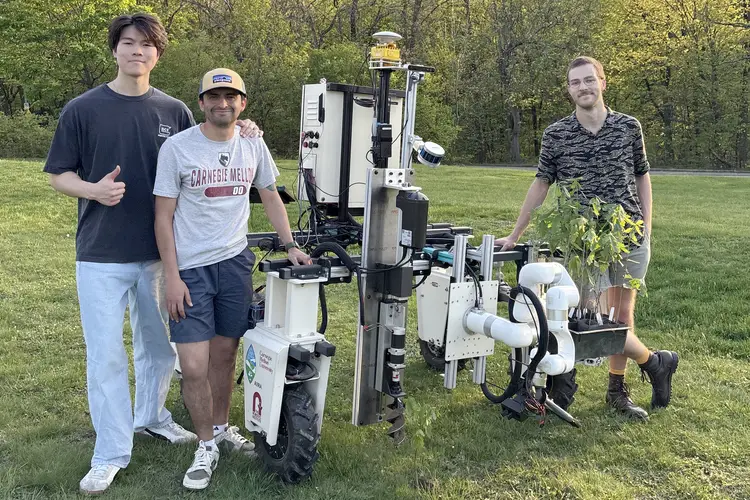
CMU Prepares Navy Robotics Specialists for the Age of AI
Robotics Academy program teaches skills to prepare sailors for real-world situations
Media Inquiries
Two sailors use small amphibious robots to perform real-time mapping and navigation around a lakeshore. In another exercise, sailors monitor a robot reconnaissance vehicle crawling through a maze. They reveal a simulated hazardous object in the field.
These scenes aren’t from military training, but from a final training competition led by the Carnegie Mellon Robotics Academy(opens in new window) (CMRA).
Following a successful pilot in 2024, Carnegie Mellon University recently completed a second round of hands-on training for the U.S. Navy’s emerging class of robotics specialists(opens in new window). Developed in collaboration with the Office of Naval Research, the program aims to explore cost-effective ways to prepare sailors for a fast-changing robotics landscape by equipping them to rapidly understand, operate and adapt autonomous systems, including certain forms of AI.
“With the fast pace of technology and the ever-shifting nature of conflict with adversaries, to maintain maritime dominance, it’s not enough to teach or know a singular or specific system,” said Lt. Cmdr. Mike Natali, program director for the Office of Naval Research. “Our sailors need the underlying skills and understanding to learn quickly, adapt to and operate multiple novel platforms. This effort has developed and tested the methods to do so and provide the Navy a foundation to train robotics to the next generation of sailors.”
A curriculum for a changing battlefield
The Navy created the new robotics specialist rating to consolidate training and career pathways as military robotics shifts from platform-specific expertise to more agile, multisystem operation.
“Robotics technology moves forward every day,“ said Ross Higashi(opens in new window), principal investigator and co-director for research at CMRA. “But there are certain aspects such as systems thinking, sensing, perception and control that are shared across all systems and having the right frame of reference pulls back the curtain on all of it, so to speak. It enables someone to quickly wrap their head around the core of how any particular robot works, so they can get straight to learning its specifics.”
The six-week course spiraled through increasing levels of complexity, starting with building simple circuits and progressing to troubleshooting and deploying AI-assisted drones and ground vehicles.
“We doubled down on the traditional spiral curriculum by cycling through robotic platforms as well as concepts. Each technical area — electrical, mechanical, software and so on — was taught using a robot platform optimized for learning that topic. And we covered every topic for everyone, because even very experienced people tend to have specialized knowledge, whereas robotics is interdisciplinary by nature. By the end, participants have worked with nearly a dozen different robots on land, air and water, and experienced firsthand both their breadth of capabilities, and their common technical elements.
Testing skills in the “reconnaissance grid”
The program culminated in a multi-event field competition that put the sailors’ new skills to the test. In one challenge, participants had just hours to learn a new ground-based vehicle, navigate it through a tented “reconnaissance grid” and analyze the data they collected to identify objects of interest.
In a more advanced task, they used that data to train a “grey box” machine vision model to assist them in spotting one of the scoring objects in long reels of video footage, effectively tuning artificial intelligence (AI) in the field to meet mission goals.
Sailors who completed the CMU-led training significantly outperformed a comparison group in competition outcomes, including on the AI training task.
Training beyond the textbook
Participant feedback pointed to the value of hands-on learning, with particular praise for the course’s emphasis on troubleshooting and whole-system understanding. In interviews and evaluations, sailors described the training as directly relevant to their work and more practical than standard textbook approaches.
“This is what I’m actually doing at work,” one active-duty unmanned surface vehicle operator reported.
With the second cohort complete, CMU researchers are analyzing data to assess long-term learning retention and determine which training elements best prepare operators for near-future autonomous systems. Now validated with real users in a relevant environment, the lessons learned and curriculum produced by the experimental training are closer than ever to informing or even becoming a part of formal Navy training.



